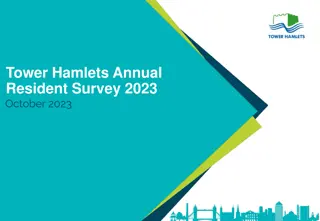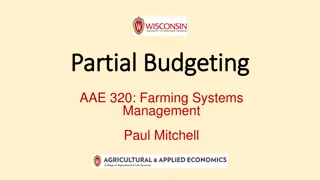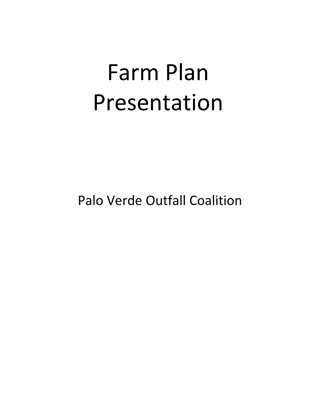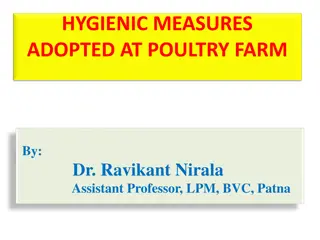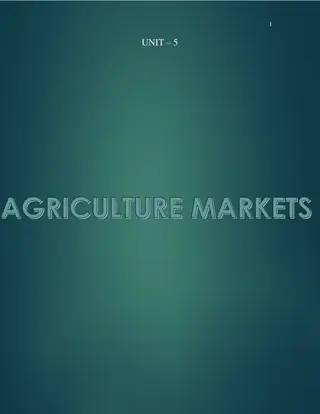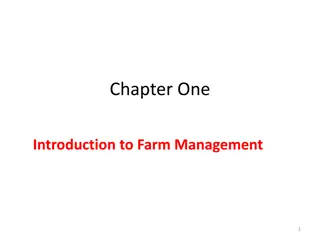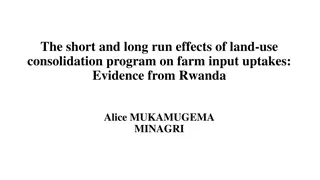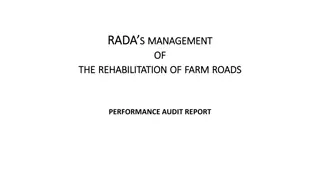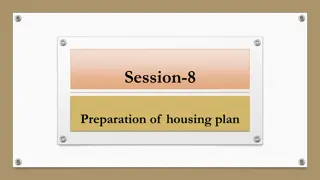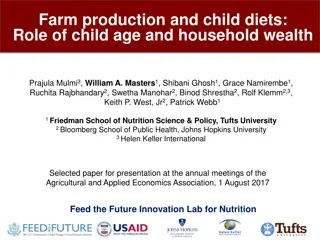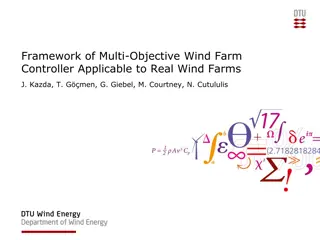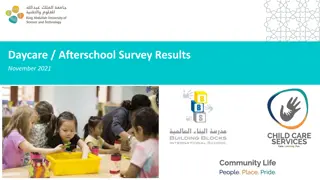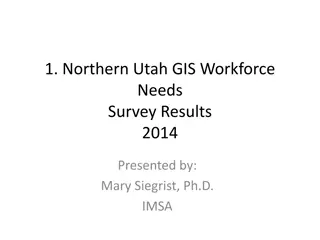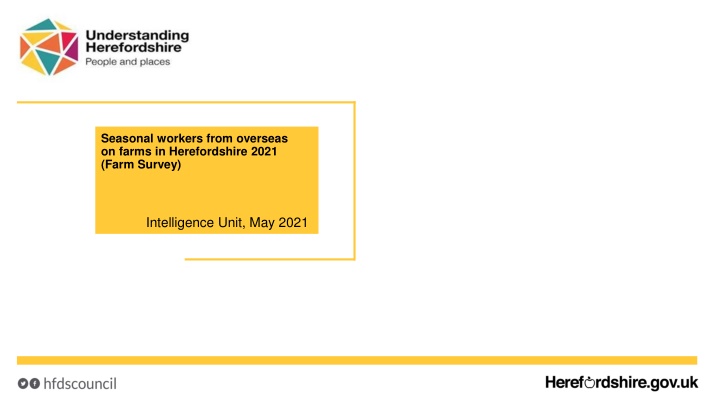
Seasonal Workers from Overseas on Farms in Herefordshire 2021 Survey
Explore insights from the 2021 Farm Survey in Herefordshire, focusing on seasonal workers from overseas. Discover key findings such as worker demographics, expected numbers, recruitment methods, and concerns for the year. Gain valuable information on the impact of the pandemic and Brexit on the seasonal workforce in agriculture.
Download Presentation

Please find below an Image/Link to download the presentation.
The content on the website is provided AS IS for your information and personal use only. It may not be sold, licensed, or shared on other websites without obtaining consent from the author. If you encounter any issues during the download, it is possible that the publisher has removed the file from their server.
You are allowed to download the files provided on this website for personal or commercial use, subject to the condition that they are used lawfully. All files are the property of their respective owners.
The content on the website is provided AS IS for your information and personal use only. It may not be sold, licensed, or shared on other websites without obtaining consent from the author.
E N D
Presentation Transcript
Seasonal workers from overseas on farms in Herefordshire 2021 (Farm Survey) Intelligence Unit, May 2021
Content Key messages The Farm Survey 2021 Best estimates about this year Total number of workers by locality Characteristics of seasonal workers Seasonality Expected length of stay Provision of Accommodation Method of recruitment British seasonal workers Concerns about recruitment in 2021 Last year s experience and future years If you need help to understand this document, or would like it in another format or language, please contact us on 01432 261944 or e-mail researchteam@herefordshire.gov.uk
Key points As a result of the pandemic and the need to better understand the seasonal workforce on farms in Herefordshire, this survey was carried out in March 2021 for the first time since 2014. Any farm intending to recruit temporary workers from overseas was invited to respond: as there is no definitive list 108 possible farms were contacted directly and it was also promoted openly by the NFU. A total of 39 farms responded, including all the largest soft fruit growers in the county. 23 intended to recruit in 2021, and based on their responses: 4,500 seasonal workers from overseas are expected on Herefordshire farms over the course of 2021 with the majority (42%) arriving during May and June. Two-thirds are expected to be aged 25 to 44, and 59% male. The peak numbers expected at any one time are around 3,000 during June, July and August, although at least 400 at any point in the year. 75% are expected to stay for between 3 and 6 months. Reflecting the SAWS Pilot Scheme, two-thirds are still expected to come from Bulgaria and Romania. However, a higher number than previously are expected to come from outside the EU. Farms also intend to employ more British workers this year (~ 250). The vast majority (95%) are expected to be accommodated on-site, with almost all farms having a documented Covid-19 risk assessment. Although 15 farms use an agency to recruit their workers, 8 of these also directly recruit themselves, and another 7 don t use an agency at all. There were mixed feelings about last year, with difficulties caused by the transition out of the EU as well as the pandemic, but also reflection on the success of getting through such a difficult year. 15 farms have concerns about actually being able to recruit enough workers this year, with reasons including the requirements placed on EU workers due to Brexit e.g. having to have applied for settled status , the cost of travel, and Covid restrictions / concerns.
About the farm survey Context The reinstated annual farm survey which helps to fill the gaps in understanding of seasonal workforce in farms in Herefordshire. During the COVID pandemic it was felt that there was a lack of up to date information about Herefordshire s seasonal workforce in terms of providing necessary support during an out break. Therefore, it was recommended that to reinstate the farm survey which provides most up to date information. Questions were designed to find out best estimates of the numbers of seasonal workers from overseas* expected to be employed in 2021, including age, gender and nationality experiences in 2020, in the middle of the pandemic thoughts on the future, especially in relation to the impact of COVID-19 and with the recent and planned changes to the recruitment system following Britain s exit from the EU. Distribution and duration 84 farms in the central database were invited to complete the online survey via email, 24 were sent a paper copy. promoted in National Farmers Union (NFU) monthly newsletter to all farms in Herefordshire survey was live from 2 March 17 March 2021 * Seasonal workers from overseas in this context mean foreign nationals who are employed on a temporary basis, probably over the growing season. These seasonal workers could arrive directly from abroad, or could already be in Herefordshire or elsewhere in the UK.
Characteristics of seasonal workers As in previous years, the biggest proportions of workers are expected to be: men (59%) aged 25 to 44 (64%) 68% are expected from a country previously covered by Seasonal Agricultural Worker Scheme (SAWS); Bulgaria & Romania. 32% from other countries including Barbados & Nepal, previously not recorded in Herefordshire. Indication that higher numbers are expected from Ukraine, Belarus, and Russia but exact numbers not known yet.
Seasonality Maximum numbers Peak numbers of arrivals are expected in June (3,000), July (3,200) & August (3,000), although at least 400 seasonal workers are expected to be employed at any point of the month throughout the year. Arrivals The highest number of arrivals expected to be in May (900) and June (1,100) - 19% & 23% of all arrivals expected in 2021. 80% of all arrivals expected to be in the first half of the year.
Expected length of stay According to 13 farms, 270 seasonal workers (6% of expected total) would already be living in UK, 35% already living in Herefordshire. 22 farms provided the length of stay of their 4,470 expected seasonal workers: 29% - less than 3 months, 46% - 3-6 months, 24% - 6-12 months and 1% - for more than 12 months. Provision of accommodation 20 farms provide accommodation for their 4,140 seasonal workers either on-site (95%) or off-site (5%). 16 farms gave information about the type of off-site accommodation that seasonal workers will live in: Caravans - 8 farms (1 farm also has bank houses) Mobile homes - 4 farms Privately rented houses - 3 farms (1 also has on-site accommodation) Unknown 1 farm Number of workers sharing amenities including kitchen, bathroom and toilet in each on-site accommodation unit: the majority of farms (11) have on-site units shared by 4 workers, 4 farms each have units shared by 3 or 5 workers.
Method of recruitment 7 farms expected to recruit seasonal workers through an agency, another 7 farms expected to directly source their workforce while further 8 will use combination of methods - through an agency and direct recruitment. Those who expected to source seasonal workers through an agency (15 in total) will use a pilot operator too (7 farms). That is 2,670 workers expected to recruit via Seasonal Worker Pilot Scheme which is extended for 2021. The farms who expected to recruit through an agency will use one of the Seasonal Worker Pilot Operators: Concordia, Pro-Force or Fruitful Jobs. Those who will not use a pilot operator will use other agencies such as: HOPS Labour Solutions, Agri HR, East Recruitment Admin Ltd, Opus, JSSINA or WWOOF. 19 farms said that they actively try and recruit workers who have worked for them before: 7 farms expected returnees to make up at least 50 per cent of their seasonal workforce. 47% (2,120) of total expected in 2021 may have worked in the country before. British seasonal workers 21 farms expected to recruit British seasonal workers, among them approximately 250 British seasonal workers were expected over the course of 2021. This is a marked increase compared to the numbers expected in previous years* (50 British seasonal workers in 2012, 10 in 2013 & 70 in 2014). *Note: trend analysis can be affected by different farms responding each year and some farms not responding every year.
Concerns about recruitment in 2021 15 farms had concerns about being able to recruit enough seasonal workers this year, 14 of whom gave reasons as due to: COVID & Brexit (both) 9 farms Brexit 3 farms COVID 1 farm Other reasons (Strength of /$, Benefit payments) - 1 farm
Last years experience and future years Covid-19 & transition out of the EU
Numbers of workers last year and response to Covid-19 Last years numbers: 2020 22 farms employed seasonal workers 19 recruited as many as expected Response to COVID Varied bubble sizes - 2, 3, 4, 6, 16 or 20 Bubble size varied according to accommodation or type of work, work requirements, season and demographics of the workers Family groups in one bubble 2 recruited fewer than expected (due to COVID- 19 and Travel restrictions or Frosted crop ) 2021 23 farms expected to employ seasonal workers 1 recruited more than expected Of these, 2 farms had more seasonal workers than needed, so the situation was dealt with: Reduced hours (1 farm) Found them work (1 farm) 2022 & beyond 21 farms +
Support from Herefordshire Council 19 farms said they have a documented Covid-19 risk assessment. Two farms said they don t, giving the reasons that they do not provide accommodation or recruit less than 5 seasonal workers, of whom the majority are British . 9 farms would like specific information and support from Herefordshire Council for: (note - farms were able to chose more than one answer) NB. These questions were asked to find out whether the council can do anything to improve future communication and support for farms
Difficulties faced in 2020 According to 15 farms, the difficulties that they faced in 2020 were: (note - farms were able to select more than one answer) Shortage of seasonal workers linked to COVID-19 - 11 farms Loss of crops because of labour shortages - 7 farms Shortage of seasonal workers linked to Brexit - 5 farms Loss of crops for other reasons, e.g. weather - 3 farms Outbreak of COVID-19 amongst workers living onsite - 1 farm Other difficulties - 3 farms
Considering future years (i.e. 2022 and beyond) Most of the farms planning to recruit in 2021 also expect to recruit in future years: Yes 21 farms (all of whom expect seasonal workers in 2021) No 10 farms (none of whom employed/expect seasonal workers in 2020/21) Don t know 5 farms (1 of whom expected seasonal workers in 2021) Reasons why and what farms do instead of employing seasonal workers from overseas: Not required (mostly small business) - 3 farms Use locally sourced labour - 2 farms Require full time, skilled labour (unskilled seasonal labour is not suitable) - 2 farms SAWS scheme numbers look massively below what the industry needs - 1 farm


